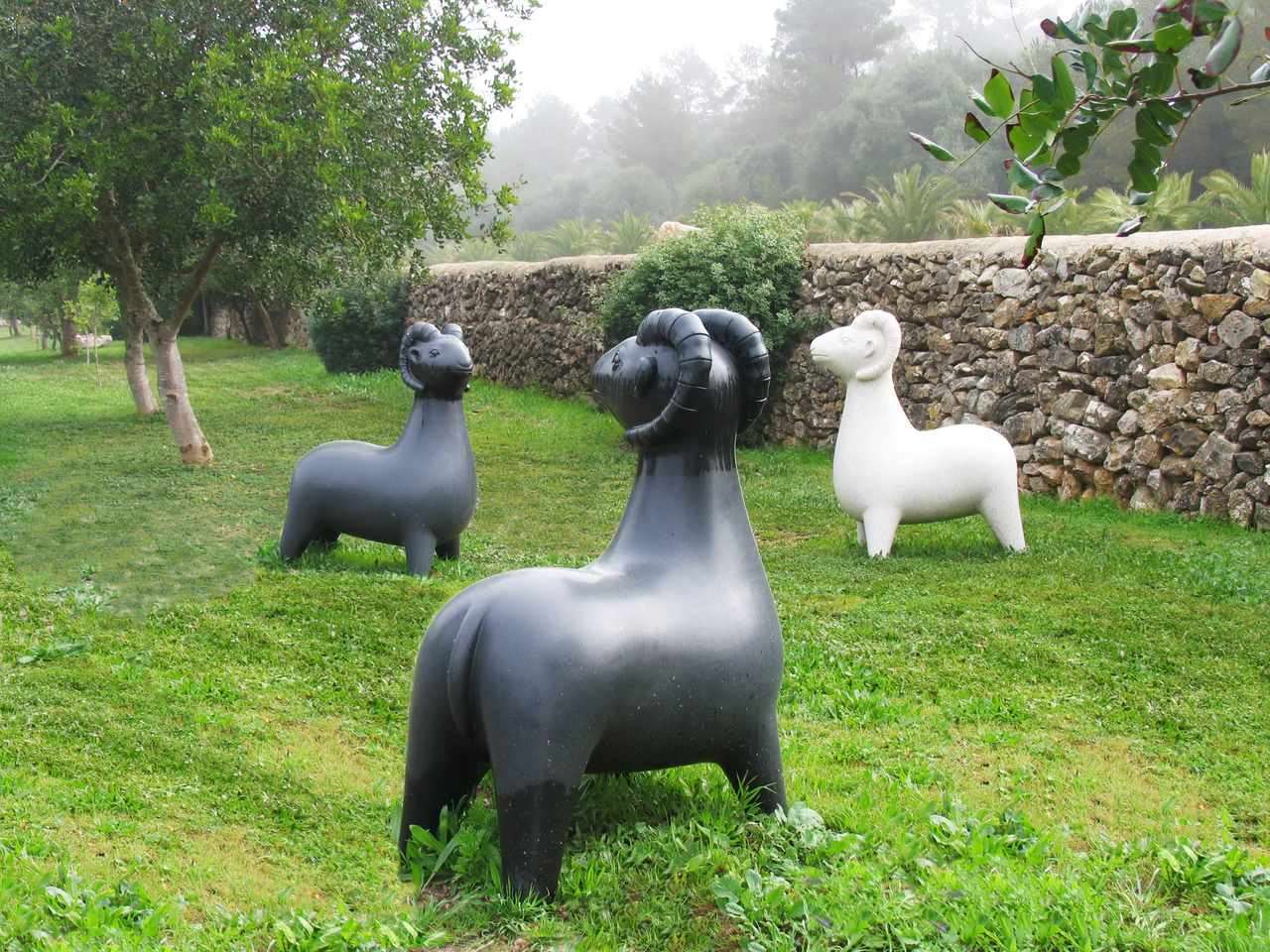Alcudia is a small seafront location with a lovely port, family friendly beach and an ancient city ideal for holiday makers.
Just because the lush, seafront city of Alcudia is a mere 24 square miles (60 square kilometres) that has no bearing on how much this lovely port and ancient city on the island’s nether region, can offer holiday makers.
You can find it, as the Romans did, in the northern reaches of Mallorca around an hour or so away from Mallorca’s capital, Palma. Sure it doesn’t have the buzzy boozy nightlife of Magaluf – thankfully. Instead, it is home to gorgeous landscape, plenty of heritage (history books cite a Bronze Age population), a lovely family-friendly beach and a sensational art destination that is crying out to be found.
Exploring the old town of Alcudia
The Moors got there in the 9th century and stayed for 300 years. They named this ancient hilltop city “Al-Qudya” which means the hill in Arabic.
They were defeated by King James I in 1298. But it was King James II who designed the 14th-century quadrangular shaped ramparts. The 6m high walls are still intact and they make for a lovely stroll giving views over rooftops and private terraces. Its 1.5 km length is dotted with 26 towers and two gates – Porta de Xara and Porta de Mallorca – which have been declared National Monuments.
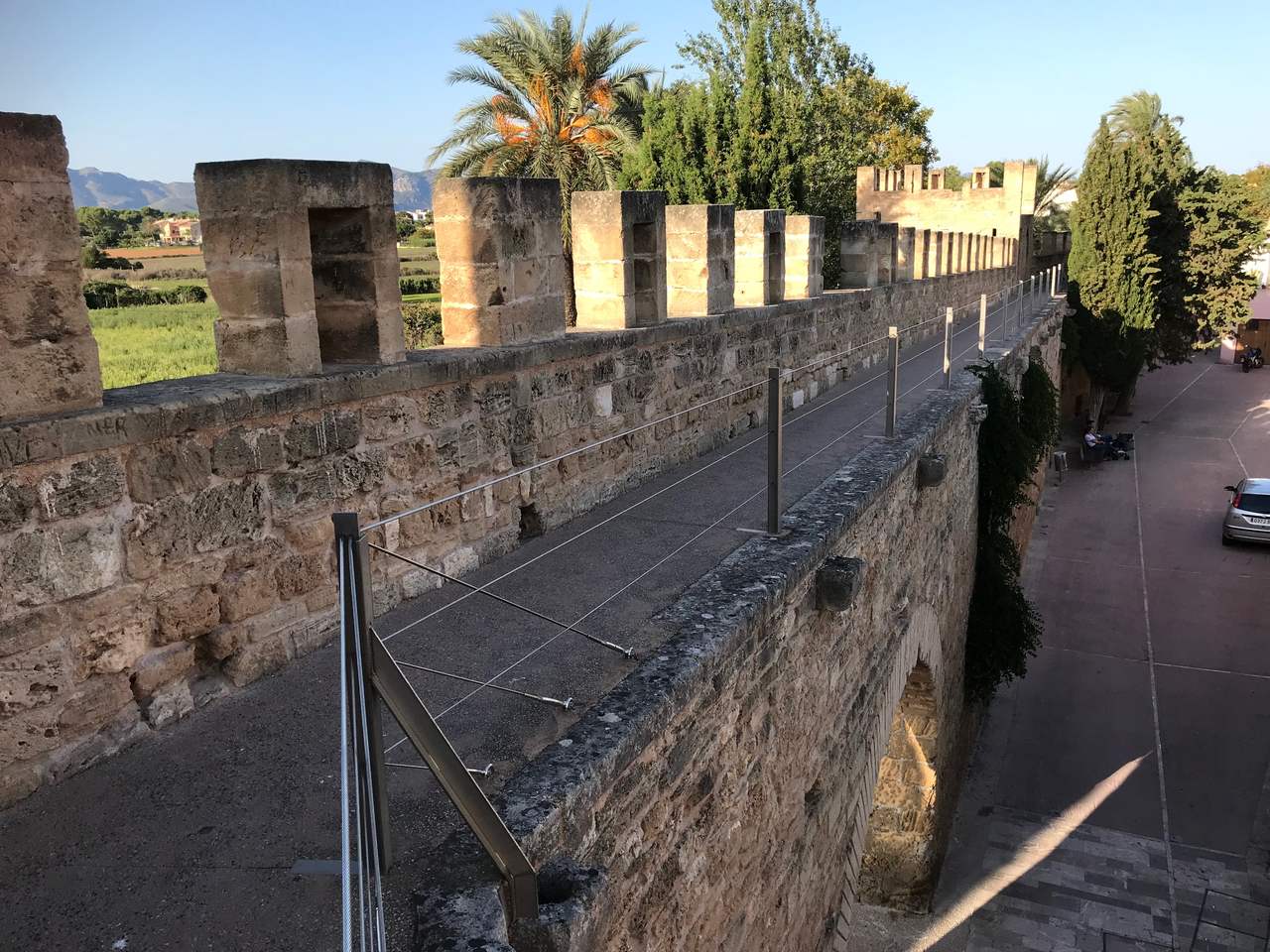
They almost surround the compact old town whose quaint winding roads are hemmed by sandstone architecture that look prettiest in the golden-hued late afternoon sunlight. Within them are a flurry of quaint shops and restaurants.
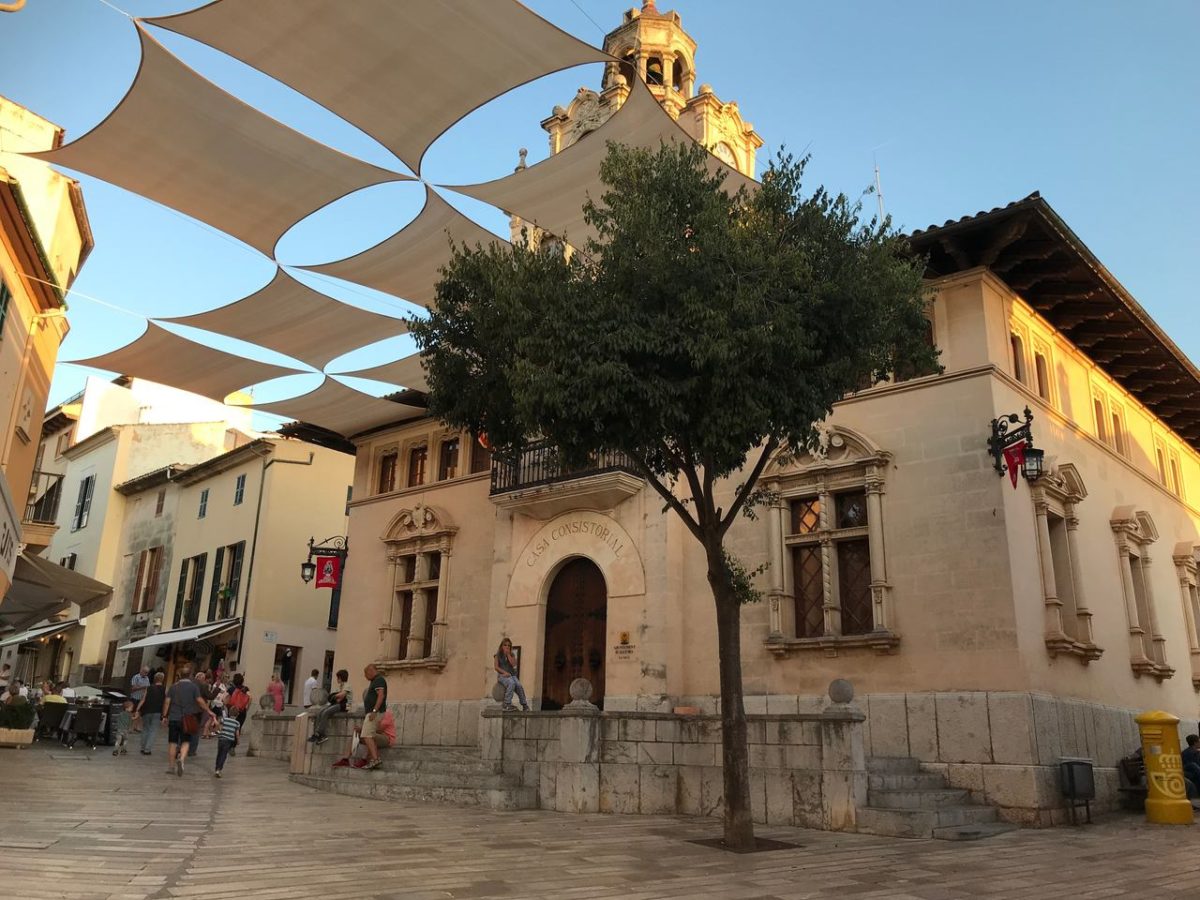
You are bound to pass the white-washed Ajuntament d’Alcúdia (Town Hall) and its pretty gold-topped clock tower in the Calle Mayor area.
The Beach
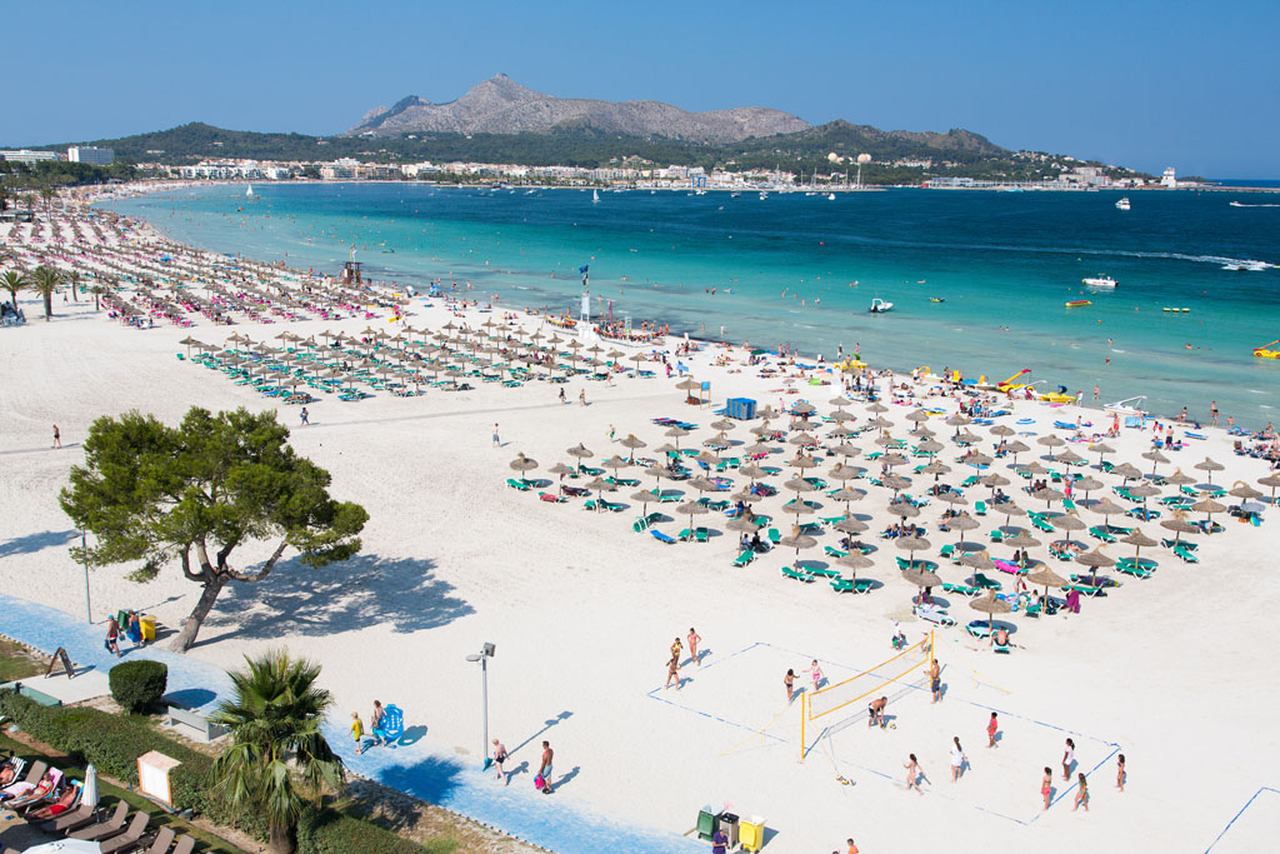
Alcudia has a fabulous wide-brimmed, soft-sand beach on Platja d’Alcúdia and is one of the longest on the island. It’s ideal for young families because around here the beach has reassuringly shallow waters, especially by Playa De Muro. Yet it also offers hidden coves and impressive cliffs that feature along its 14km long stretch all the way to Can Picafort. For the kids, there’s a fun theme water park by the water’s edge, go-karting and crazy golf.
The Roman town of Ciudad de Pollentia
Located close between Bahía de Pollensa and Bahía de Alcudia, and conveniently close to the old town of Alcudia are the remains of the Roman capital of the Balearic Islands. It’s called Ciudad de Pollentia (which means city of power, a name that gives an insight as to how the Romans perceived themselves).
It’s been years of excavation to reveal an incredible 12 hectares of ruins from the 1st century BC. Most of it is easy to discern and each segment has a notice board of information to help the juices of the imagination conjure up visuals of what might have been.
Founded by Quinto Cecilio Metel the city comprises three segments: the residential district – barrio de La Portella – where you can see some streets and buildings of the time, a 100m segment of the city walls and the Forum.
Around 15 minutes away on the outskirts of the Roman city is the Roman theatre. Yes, it’s a long walk but as a perk, you get to see some verdant land and pretty wildflowers along the way.
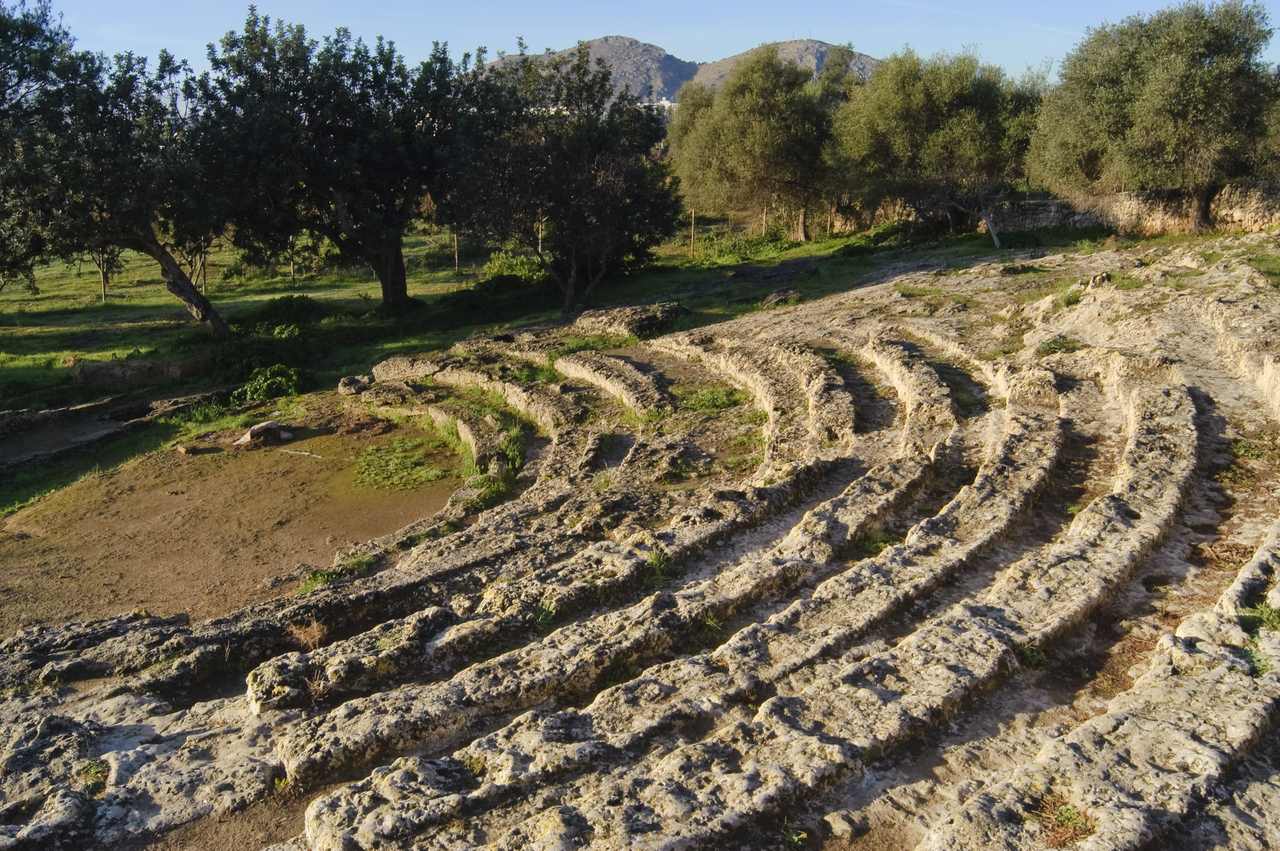
The Romans loved theatrics and this theatre’s capacity of up to 2,000 people is a testament to that. Test the acoustics, you’ll be impressed with the sound. Or climb the steps to the top for a highly instagrammable photo. Beware though, depending on the time of year, mosquitoes linger here, so keep repellant handy.
The entrance fee is 4 euros a person (kids free) and gives access to the museum located elsewhere in town. Just follow the red Roman symbols painted on the pavement from the entrance of the site to the monographic museum next to the church.
Museo Sa Bassa Blanca
For art lovers, Sa Bassa Blanca museum is the highlight of Alcudia and a destination in its own right. Yet it is squirrelled away just outside town so you’ll need a car to get there.
It has its roots in the 70s when artists and collectors Ben Jakober and Yannick Vu acquired a farmhouse. With the help of Egyptian architect, Hassan Fathy, they transformed it into an impressive, sprawling Hispano-Moorish building with appealing white domes, tiled floors and doors and a courtyard with several styles of gardens with lush mountains as the backdrop and views of the sea beyond.
Though they no longer live there, this gorgeous building makes for an interesting nose-around. It’s full of curiosities and various collections of modern and contemporary art and 50 photographic portraits of key artists of the 20th and 21st centuries. One room is dedicated to sculptures by Meret Oppenheim, Antoni Miralda, Takis and Alan Rath. An entire room is also dedicated to the creations by Vu Cao Dam, Yannick Vu’s dad.
On the top floor, there is a room whose ceiling is so awesome it even has a name – “The Mudejar”. It was created in 1498, and is a sensational example of ancient Balearic craftsmanship.
There are some underground galleries that include portraits of royal children and a particularly thought-provoking exhibition in the Socrates gallery about Space and Time. Oddities like a giant golden dummy, a dancing shoe and a sparkling 10,000 piece crystal curtain by Swarovski acting as the backdrop to a fossilised skeleton of a Siberian woolly rhinoceros are sure to raise a curious eyebrow.
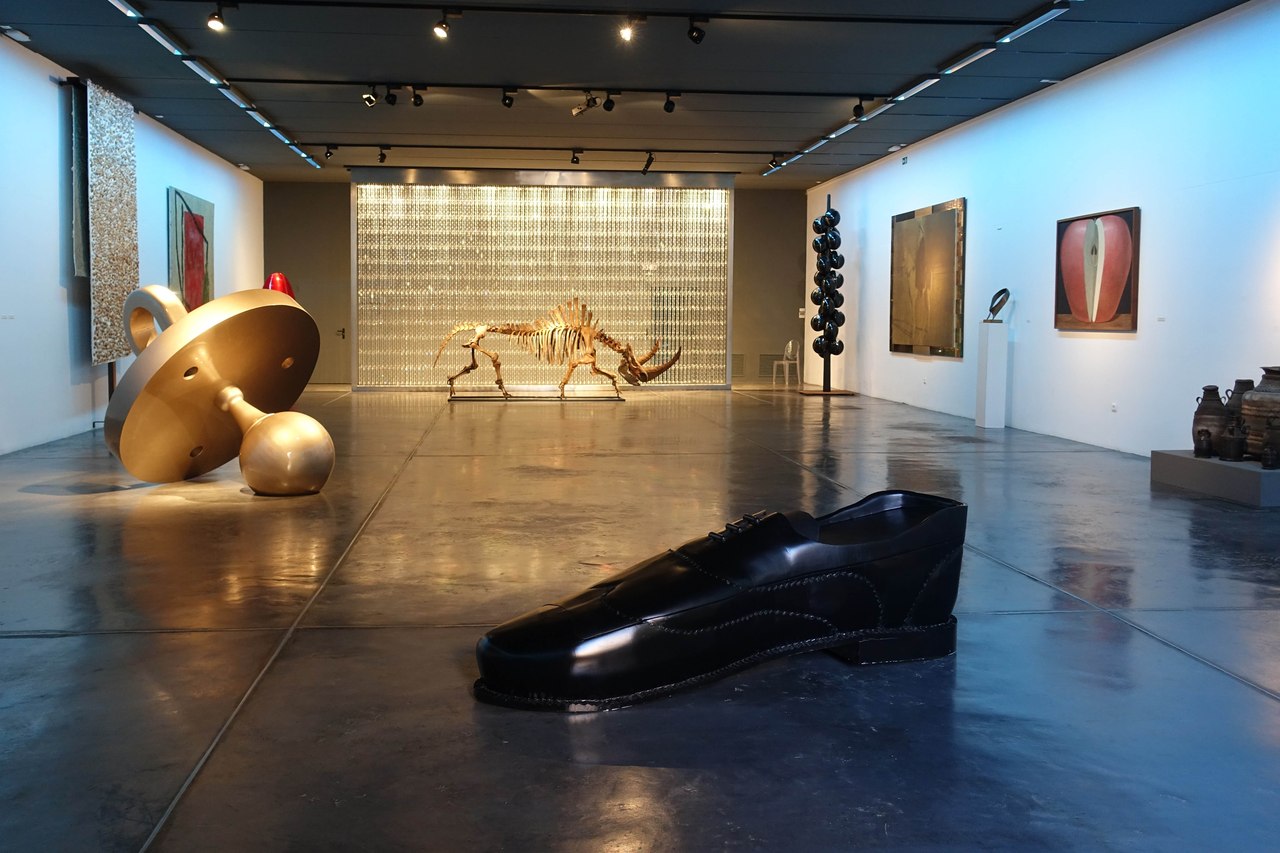
The gardens are simply beautiful and created with a great deal of heart-felt inspiration. Every so often there are granite animals such as hippos, rams, elephants and a bizarre octopus all created by the two artists. It’s their personal safari.
There’s also a wish tree created by Yoko Ono where branches are tagged with the personal hopes and wishes of visitors.
A 15-minute climb to what was once a military lookout, over the Bay of Alcudia lead to three large columns and a large human statue, Figura, on the roof of the Observatory. Inside there’s a bizarre installation Aquarium by Ben and Yannick. In effect, it is a mind-boggling hall of mirrors.
There is a sliding scale of fees depending on what you wish to visit and if you would like a tour. These start at 10 euros.
Where to eat
Restaurante Mirador de la Victoria
Find the Mirado de la Victoria on the coast road of the La Victoria peninsula amid fragrant pine trees. Enjoy typical local food such as Frito Mallorquin (sautéed meat with veg) and Fish a la Mallorquina and a truly delicious paella. The views over the unspoilt natural beauty of the sea and the mountains beyond are spectacular
Restaurant Miramar
At the 19th century Restaurant Miramar you can eat inside or alfresco on the terraces that overlook the fishing port of Alcudia Mediterranean cuisine includes fish, seafood and meats and a wine cellar.
Restaurante el Jardin
At designer restaurant Restaurante el Jardin your backdrop is wavy white walls and a sculpture or two by Yannick Ru. It is run by Dani and Macarena del Castro – Macarena has a Michelin Star and so you can expect fine dining here that changes with the seasons.
Getting there
There are several airlines that fly to Palma including Jet2.com who offer flights from several UK locations.
If you have a car, you can drive to Alcudia without a problem. From Palma take the highway MA-13.
Family Package Holiday £844pp all-inclusive with On The Beach : Hotels Jupiter, Saturno and Marte are part of the Club Mac Complex, surrounded by lovely gardens on a hill between two picturesque bays. Waterpark access is now included in all bookings to the Club Mac. 7-nights from £844pp all-inclusive
Loveholidays are offering family holidays from £162pp



